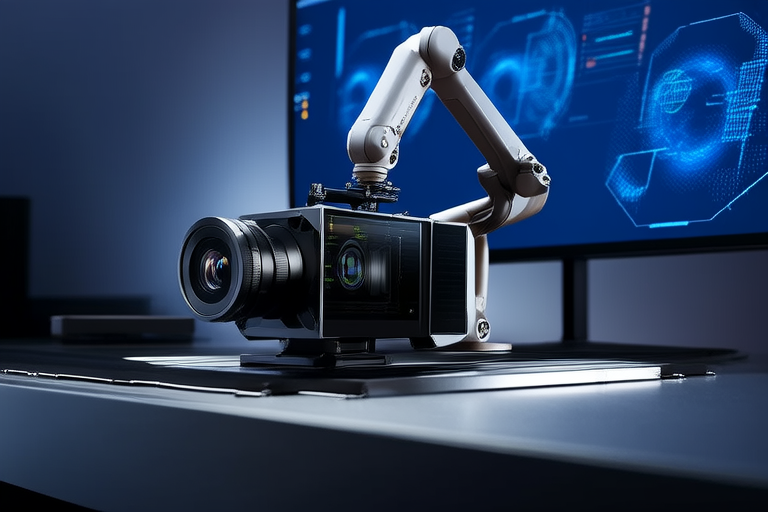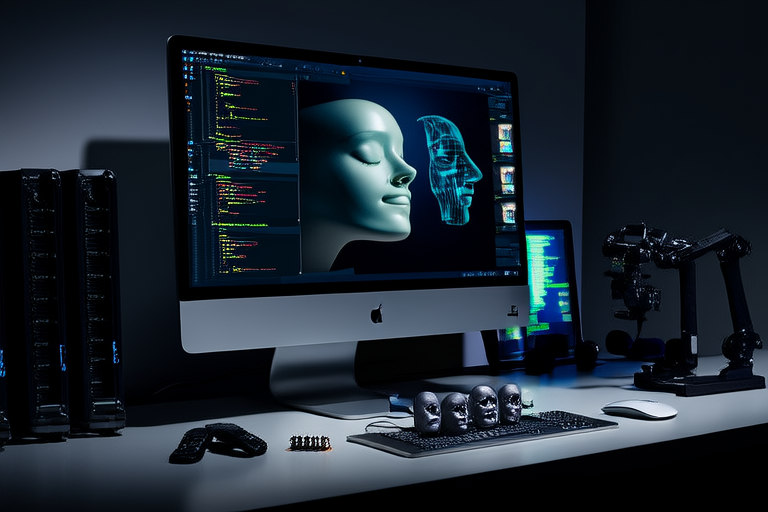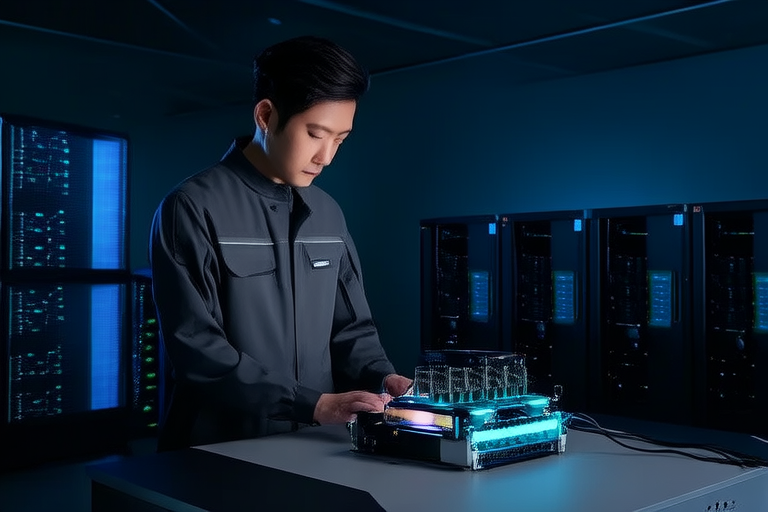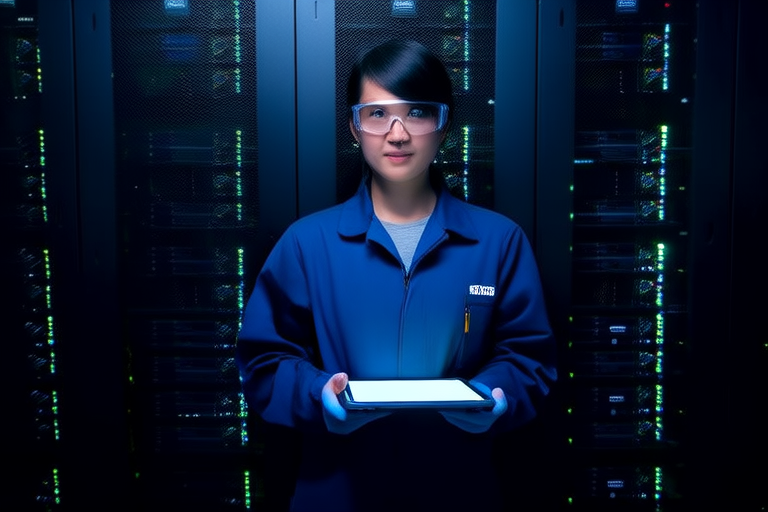Unlocking New Possibilities: Applications of Computer Vision in Everyday Life
Introduction
Computer vision is a rapidly advancing field within artificial intelligence (AI) that enables machines to interpret and understand visual information from the world around them. By processing data from cameras and sensors, computer vision algorithms can identify objects, track movements, and even make decisions based on visual inputs. This technology has become indispensable in modern technology, playing a pivotal role in enhancing efficiency, safety, and convenience across various sectors. From healthcare to retail, automotive to entertainment, computer vision is increasingly becoming an integral part of our daily lives.
Section 1: Healthcare
In the realm of healthcare, computer vision has revolutionized medical imaging by enabling more accurate diagnoses and treatments. For instance, AI-powered algorithms analyze X-rays, MRIs, and CT scans to detect abnormalities that might be missed by human eyes. Early disease detection is one of the most significant benefits, allowing for timely interventions that can save lives. Robotic surgery, another area where computer vision excels, ensures precise movements and minimally invasive procedures, reducing recovery times and risks associated with traditional surgeries. Patient monitoring systems equipped with computer vision also provide continuous surveillance, alerting healthcare providers to any changes in a patient’s condition.
One notable example is the use of deep learning models to analyze retinal images for signs of diabetic retinopathy. These models can predict the onset of the disease with high accuracy, helping doctors intervene before irreversible damage occurs. Similarly, computer vision has been instrumental in automating the analysis of mammograms, leading to earlier detection of breast cancer and better treatment outcomes.
Section 2: Retail and E-commerce
The retail sector has embraced computer vision to enhance customer experiences and streamline operations. Virtual try-on tools powered by computer vision allow shoppers to visualize clothing items without physically trying them on, improving satisfaction rates and reducing returns. Personalized product recommendations based on user behavior and preferences further tailor the shopping experience, boosting customer loyalty.
Inventory management systems equipped with computer vision ensure real-time tracking of stock levels, preventing overstock or shortages. Cashier-less stores like Amazon Go leverage this technology to enable seamless checkout processes, while advanced security systems monitor store environments for suspicious activities. Companies such as Alibaba and Walmart have successfully integrated computer vision into their operations, demonstrating its practicality and effectiveness.
Section 3: Automotive Industry
The automotive industry stands at the forefront of innovation when it comes to integrating computer vision into vehicles. Autonomous driving technologies rely heavily on computer vision to navigate roads safely and efficiently. Cameras mounted on self-driving cars continuously capture surrounding environments, identifying obstacles, pedestrians, and road signs. Collision avoidance systems use these inputs to adjust speed or steering, ensuring passenger safety.
Lane detection algorithms assist drivers in maintaining proper positioning on highways, while pedestrian recognition helps prevent accidents involving vulnerable road users. Furthermore, smart traffic management systems utilize computer vision to optimize traffic flow, reduce congestion, and improve overall urban mobility. These advancements not only enhance driving experiences but also contribute significantly towards sustainable transportation solutions.
Section 4: Smart Homes and IoT
Smart homes have become increasingly sophisticated thanks to computer vision capabilities embedded within various devices. Facial recognition technology provides secure access to homes, offices, and other restricted areas, eliminating the need for physical keys or passwords. Gesture controls allow users to interact with appliances remotely, adding convenience to daily routines. Home automation systems powered by computer vision adapt environments according to user preferences, adjusting lighting, temperature, and entertainment settings accordingly.
Popular smart home products like Google Nest Hub and Ring doorbell incorporate computer vision features that enhance security and comfort. These devices not only detect movement but also recognize individuals, sending alerts to users’ smartphones when unfamiliar faces approach their property. As connectivity continues to expand, expect more intelligent home solutions that leverage computer vision for enhanced functionality and user experience.
Section 5: Entertainment and Media
Entertainment and media industries benefit immensely from computer vision, particularly in creating immersive augmented reality (AR) experiences in gaming and social media platforms. AR filters on apps like Snapchat and Instagram bring digital elements into the physical world, offering novel ways for users to engage with content. In video editing, computer vision assists editors in detecting and correcting errors, saving time and improving quality.
Content moderation becomes more efficient through automated systems that flag inappropriate material, ensuring safer online spaces. Audience engagement analytics powered by computer vision provide valuable insights into viewer behaviors, informing strategic decisions regarding programming and marketing strategies. Recent innovations include interactive AR experiences in sports broadcasts, where viewers can virtually place themselves on the field alongside players.
Conclusion
This article has explored the diverse applications of computer vision across multiple industries, highlighting its transformative impact on healthcare, retail, automotive, smart homes, and entertainment. As technology continues to evolve, we can anticipate further integration of computer vision into everyday life, addressing new challenges and unlocking unprecedented possibilities. However, challenges such as privacy concerns and ethical considerations must be carefully managed to ensure responsible development and deployment of these powerful tools.
The future holds exciting prospects for computer vision, promising even greater improvements in accuracy, speed, and usability. By embracing this technology thoughtfully, society can harness its full potential while mitigating potential risks. Stay tuned for ongoing advancements in this dynamic field!




